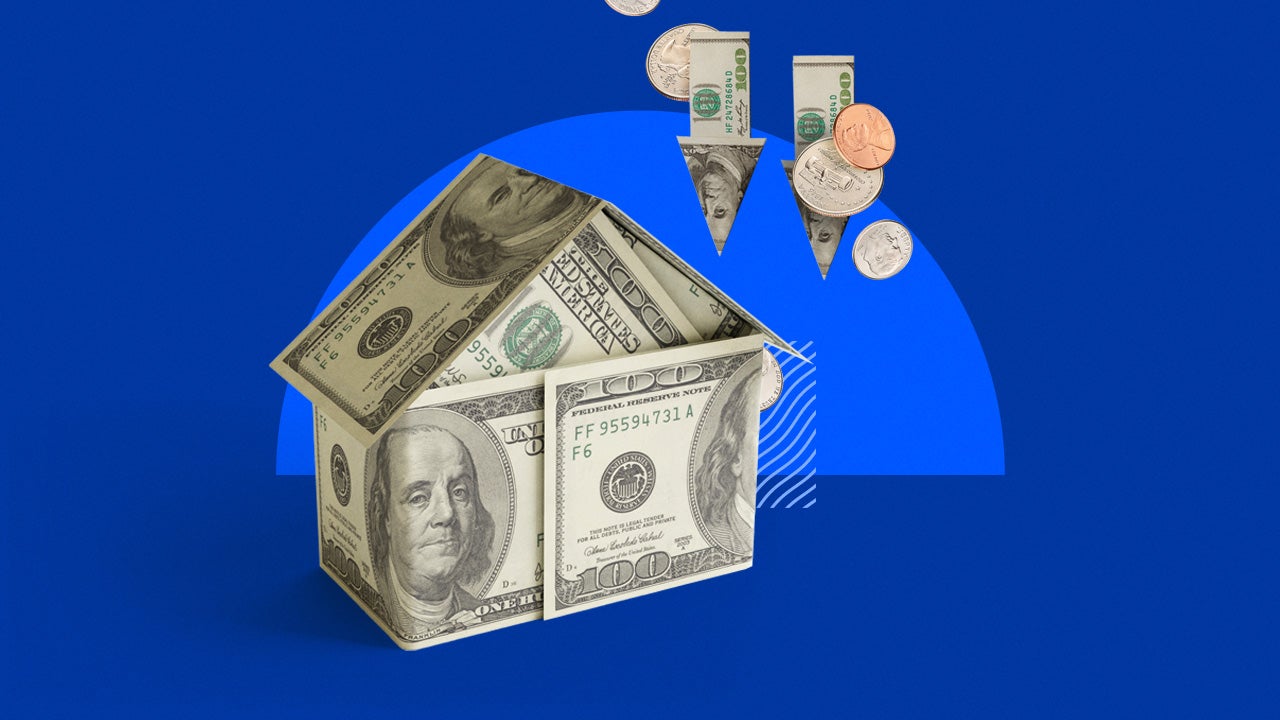Housing market update: Sales slow, prices rise

Key takeaways
- High home prices and high mortgage rates continue to make this a challenging market for hopeful homebuyers.
- Housing inventory is still tight as well, with more demand from buyers than there are homes for sale.
- Even despite the sellers’ market, many homeowners are locked into much lower rates and thus choosing not to sell right now.
As 2023 winds down, the housing market appears to be following suit, growing more sluggish with each passing day. October housing data from Realtor.com shows that the number of homes for sale decreased 2 percent compared to October of last year, while there were 3.2 percent fewer newly listed homes and the number of pending listings — homes under contract but not yet sold — decreased 7.6 percent during the same time frame. Here’s a closer look at the direction of the housing market as the year comes to a close.
Big-picture housing market update
The most recent inflation data reflects a rate of 3.7 percent, according to the Consumer Price Index. While inflation has continued its steady march downward as the year progressed and is well below the 6.4 percent rate that opened 2023, the Federal Reserve’s goal of 2 percent has still not been realized.
Stubbornly, housing continues to be one of the largest contributors to inflation, making up more than half of the increase to the CPI’s all-items increase in September. The Fed may see some light at the end of the tunnel, though: At its most recent two meetings, it paused its streak of raising rates and opted to let the current rate stand.
That pause, however, has not yet translated into a great deal of relief in mortgage interest rates, which currently hover at or near 8 percent. As of November 1, the average mortgage rate on a 30-year fixed loan was 7.95 percent, according to Bankrate’s weekly national survey of large lenders.
The future of the market hinges heavily on the direction mortgage rates take moving forward — if they go down, that should spur much more activity and entice both buyers and sellers who had been holding off until conditions improved.
Monthly housing market metrics
- Home sales: Existing-home sales declined 2 percent from August to September 2023, according to National Association of Realtors (NAR) data. However, the year-over-year decline is a much more substantial 15.4 percent.
- Home prices: The nationwide median home price, meanwhile, grew year-over-year for the third consecutive month. September’s 2.8 percent increase brought the month’s median home sale price to $394,300, per NAR.
- Housing starts: The number of new homes beginning construction in September fell 7.2 percent when compared to last year, according to data from the U.S. Census Bureau and U.S. Department of Housing and Urban Development.
- Case-Shiller Index: The most recent Case-Shiller U.S. National Home Price NSA Index, released October 31, shows a similar upward trajectory in prices, reporting that housing prices increased in August 2023 by 2.6 percent. That’s more than double the previous month’s 1.0 percent jump and the seventh consecutive month of increases.
- Mortgage rates: According to Bankrate’s weekly national survey of large lenders, the average mortgage interest rate on a 30-year loan as of Nov. 1 stood at 7.95 percent.
Housing market for sellers
Steep mortgage rates are putting a damper on sales volume, but the market still favors sellers on multiple fronts, including prices. NAR data shows that September home sale prices on the whole were up 2.8 percent year-over-year, and the increase was even more pronounced in some specific regions. For example, in the Northeast, September’s median prices reached $439,900, up 5.2 percent from the same month one year earlier, while in the Midwest the median price was a 4.7 uptick from September 2022.
A dearth of homes for sale also gives sellers the edge: September saw a 3.4-month supply of housing inventory, which is short of the five or six months typically needed for the market to be considered balanced.
So should you try to sell now or wait? High prices and high demand are great, but keep in mind that not everything is rosy, even for sellers. The amount of time homes are taking to sell is inching upward, with September homes spending around 21 days on the market before going into contract, and high mortgage rates are keeping many potential buyers on the sidelines. Analyze your financial situation and life circumstances, as well as the state of your local market, before jumping into the market in the hopes of high profits.
Housing market for buyers
This winter’s housing market is not exactly shaping up to be ideal for home shoppers. Mortgage interest rates continue to soar, which, coupled with very high prices, makes it an especially costly time to consider buying. Realtor.com reports that, compared to October of last year, high mortgage rates have driven up the cost of financing 80 percent of the typical home by $166 per month. That’s an increase of about 7.4 percent in one year.
Even if you can afford today’s high rates and prices, a lack of inventory is restricting the options available. Many homeowners who might otherwise sell are staying put at the moment because they’re locked into mortgage rates far lower than today’s; unless rates drop enough to entice them, the amount of homes for sale isn’t likely to increase significantly.
One silver lining, though, is that if you can afford to enter the market, you’re likely to encounter less competition. In addition, prices in many popular markets are easing as compared to last year’s market frenzy. For example, according to Redfin data, Seattle, San Francisco and Austin all experienced year-over-year median price declines in September.
Next steps
If you’re wading into the real estate market this winter, it’s important to do your research. Current market dynamics are complex and evolving rapidly, and they can differ wildly by location. Sellers should make sure they have a realistic understanding of what their home is worth under current circumstances — and buyers should crunch the numbers to understand exactly how much house they can afford. Getting preapproved for a mortgage can also be very helpful, giving you a solid idea of the amount a lender would be willing to offer you. Whichever side of the transaction you’re on, working with an experienced local real estate agent can help you navigate the market more successfully.
Why we ask for feedback Your feedback helps us improve our content and services. It takes less than a minute to complete.
Your responses are anonymous and will only be used for improving our website.






